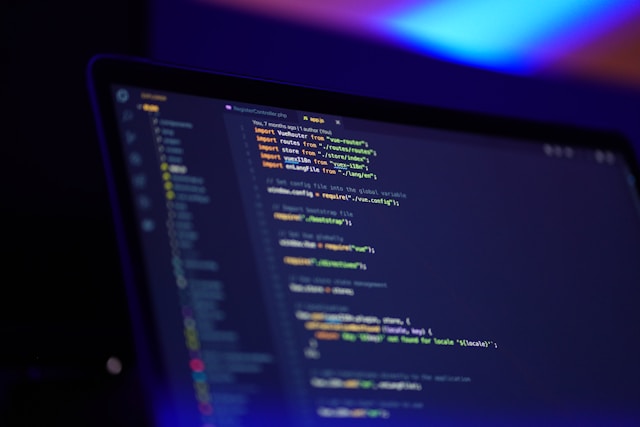Uninstalling software should be a straightforward process, but sometimes, certain programs refuse to be removed. Whether it’s due to corrupted files, background processes, or administrative restrictions, stubborn programs can be frustrating to deal with. Fortunately, there are multiple ways to force uninstall software that won’t delete from your system.
In this guide, we’ll walk you through different methods to remove stubborn programs from both Windows and Mac, ensuring your computer stays clutter-free and optimized.
Why Some Programs Won’t Uninstall
There are several reasons why a program may not uninstall properly:
- Corrupted installation files – The program’s uninstaller may be broken or missing essential files.
- Background processes – Some programs run in the background, preventing removal.
- Admin restrictions – Certain software requires administrator privileges to be deleted.
- Partial installation – If an installation was incomplete, the program might not appear in the standard uninstall menu.
- Self-protected programs – Some security tools and malware have built-in protections to prevent deletion.
How to Uninstall Stubborn Programs on Windows
If you’re struggling to uninstall a program on Windows, try these methods:
1. Use Control Panel or Settings
The first step is to attempt removal through Windows’ built-in uninstaller:
- Open Settings (Windows + I) and go to Apps > Installed Apps (Windows 11) or Apps & Features (Windows 10).
- Locate the stubborn program and click Uninstall.
- Follow the on-screen instructions to complete the process.
Alternatively, you can use Control Panel:
- Press Windows + R, type
appwiz.cpl, and hit Enter. - Find the program in the list, right-click it, and choose Uninstall.
2. End Processes via Task Manager
If the program is still running in the background, it may prevent uninstallation:
- Press Ctrl + Shift + Esc to open Task Manager.
- Look for any processes related to the stubborn software.
- Right-click the process and select End Task.
- Try uninstalling the program again.
3. Use Safe Mode to Remove the Program
Some programs prevent deletion in normal mode. Safe Mode can help bypass this:
- Press Windows + R, type
msconfig, and hit Enter. - Go to the Boot tab and select Safe Boot > Minimal.
- Restart your PC and try uninstalling the program again.
- Once done, repeat the process and uncheck Safe Boot to return to normal mode.
4. Use the Program Troubleshooter
Windows provides a Program Install and Uninstall Troubleshooter that can help:
- Download the tool from Microsoft’s official website.
- Run the troubleshooter and select Uninstalling.
- Choose the problematic program and follow the steps to force uninstall it.
5. Use a Third-Party Uninstaller Tool
If built-in methods don’t work, specialized software can help:
- Revo Uninstaller – Removes stubborn programs and leftover files.
- IObit Uninstaller – Deletes programs, including registry entries.
- Geek Uninstaller – Offers a portable solution for forced removals.
Simply install one of these tools, select the program, and use the Forced Uninstall feature.
How to Uninstall Stubborn Programs on Mac
Mac users may also encounter issues when trying to delete software. Here’s how to fix it:
1. Uninstall via the Applications Folder
- Open Finder and go to Applications.
- Drag the unwanted program to the Trash.
- Empty the Trash to complete the removal.
2. Use Activity Monitor to Close Running Processes
If the program is still running, it may block uninstallation:
- Open Activity Monitor (search for it in Spotlight).
- Locate the process related to the program.
- Click X in the top-left corner to force quit.
- Try deleting the application again.
3. Delete Leftover Files Manually
Some apps leave behind support files even after removal:
- Open Finder and click Go > Go to Folder.
- Enter
~/Library/and look for folders related to the program (e.g., Application Support, Caches, Preferences). - Delete any files associated with the app.
4. Use Terminal for Advanced Uninstallation
For deeply embedded applications, the Terminal can be used:
- Open Terminal (search for it in Spotlight).
- Type
sudo rm -rf /Applications/AppName.app(replace “AppName” with the actual program name). - Press Enter, enter your password, and confirm deletion.
5. Use Third-Party Mac Cleanup Tools
If manual removal is difficult, try these Mac uninstaller tools:
- AppCleaner – Removes apps and their leftover files.
- CleanMyMac X – Provides deep cleaning and uninstallation features.
- BuhoCleaner – Simplifies application removal on Mac.
Additional Solutions for Programs that Won’t Delete
Check for Admin Permissions
Some software requires administrative privileges to uninstall. Try running the uninstaller as an administrator by right-clicking it and selecting Run as administrator.
Reinstall the Program and Uninstall Again
If the uninstallation files are missing or corrupted, reinstalling the program might restore them:
- Download the latest version of the program from its official website.
- Install it over the existing version.
- Try uninstalling it again using normal methods.
Delete Registry Entries (Windows Only)
Sometimes, uninstalling a program manually may leave behind registry keys:
- Press Windows + R, type
regedit, and hit Enter. - Navigate to
HKEY_LOCAL_MACHINE\SOFTWAREand look for folders related to the program. - Right-click and delete the folder (only if you’re sure it belongs to the software).
Be cautious when modifying the registry, as incorrect changes can affect system stability.
When to Seek Professional Help
If none of these methods work, the program may be malware or deeply embedded in the system. Consider:
- Running an antivirus scan to check for malicious software.
- Contacting technical support if the software is legitimate but refuses to uninstall.
- Seeking IT assistance if you’re dealing with a business or enterprise system.
Final Thoughts
Removing stubborn programs can be challenging, but with the right methods, you can successfully uninstall any software that refuses to delete. Whether you’re using Windows or Mac, following these step-by-step solutions will help you regain control of your system and free up valuable storage space.








